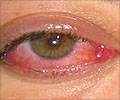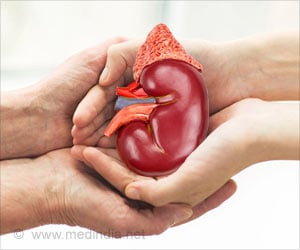The Cornea Donor Study (CDS) Investigator Group has identified a new predictor of cornea transplant success.
The Cornea Donor Study (CDS) Investigator Group has identified a new predictor of cornea transplant success.
New analysis of data from the 2008 Specular Microscopy Ancillary Study (SMAS), a subset of the CDS, found that the preoperative donor cell count of endothelial cells, previously considered to be an important predictor of a successful transplant, did not correlate with graft success. Instead the study found that a patient's endothelial cell count six months post-cornea transplant is a better indicator of subsequent failure of the graft rather than the donor's cell count. These results offer an additional, reliable indicator of success that surgeons can use for monitoring patients at the six-month milestone after transplantation.Endothelial cells form the back layer of the cornea and keep the cornea clear and prevent it from swelling. Previously it was thought that the more endothelial cells/mm2 in the donor cornea, the better, which put pressure on the eye banks to have donors with the highest count possible to distribute to corneal surgeons. However, the SMAS findings show no correlation between it and a patient's graft success rate five-years post transplant, as long as the industry standard minimum of 2,000 cells/mm2 was met. The results of this study are published in the January issue of the Archives of Ophthalmology.
"These new findings of the SMAS are excellent examples of evidence-based medicine impacting clinical practice," says Jonathan H. Lass, M.D., senior author of the study and Professor and Chair of the Department of Ophthalmology and Visual Sciences at Case Western Reserve University School of Medicine and University Hospitals Case Medical Center. "This evidence offers surgeons a broader pool of donors for their patients and will allow more individuals to donate to eye banks." The results were analyzed at the Specular Microscopy Reading Center, part of the Department of Ophthalmology and Visual Sciences at Case Western Reserve University and the University Hospitals Eye Institute.
Conceived in 1998, the CDS is a prospective cohort study that has already reported: 1) The age of the donor does not impact transplant survival after five years for conditions with moderate risk for graft failure due to endothelial dysfunction (Fuchs' dystrophy, pseudophakic/aphakic corneal edema) (Ophthalmology 2008); 2) Incompatibility of blood type between the donor and recipient also does not impact graft survival at five years (Am J Ophthalmology 2009); and 3) There was a trend toward greater endothelial cell loss (75%) in the older donor age group (over 65 years to 75 years of age) than the younger donor age group (under 65 years) (69%), but this difference did not impact graft survival at five years (Ophthalmology 2008). This NIH-funded study has been extended through 2012 in order to determine whether these findings persist for a total of ten years post-transplant.
"The more than 100 physicians and researchers involved in the Cornea Donor Study have been leading the effort to identify factors that will keep donated corneas clearer for longer," says Roy W. Beck, M.D., Ph.D., the principal investigator of the Cornea Donor Study Investigator Group and Executive Director of the Jaeb Center for Health Research in Tampa, Florida.
Advertisement
RAS













